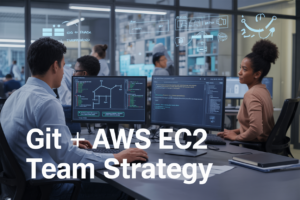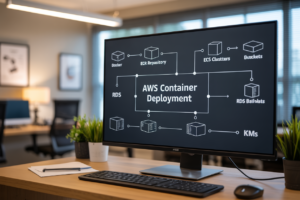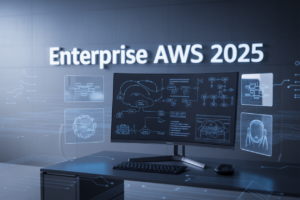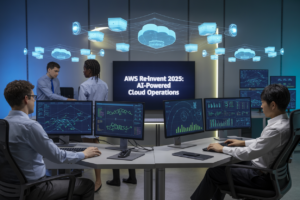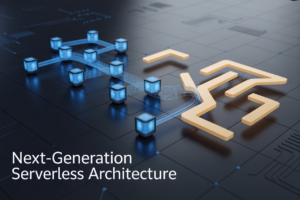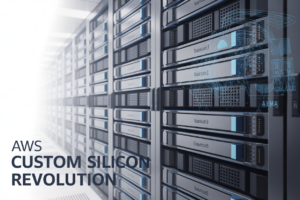New to AWS or looking to level up your cloud skills? This guide breaks down the essential AWS architecture concepts that cloud developers need to master. We’ll explore AWS foundational services that form the building blocks of any successful cloud project, then dive into key architectural design principles that will help you create robust, scalable systems. You’ll also learn about different deployment models to choose the right approach for your specific needs. Ready to build better in the AWS cloud? Let’s get started.
AWS Foundational Services: Building Blocks for Success
AWS Foundational Services: Building Blocks for Success
A. EC2: Mastering Virtual Computing Resources
EC2 is your workhorse in AWS. Need computing power? Spin up an instance in minutes. Choose from tiny micro instances to monster high-memory machines. The beauty? Pay only for what you use. Shut it down when you’re done, and the meter stops running.
B. S3: Implementing Scalable Storage Solutions
S3 buckets are dead simple but incredibly powerful. Dump your files there and forget about storage limits forever. Your app crashed and lost data? No problem—S3 offers 99.999999999% durability. That’s eleven nines! And with lifecycle policies, old files automatically move to cheaper storage.
C. VPC: Creating Secure Network Environments
VPCs aren’t just network configs—they’re your digital fortress. Segment your resources into public and private subnets. Keep your databases hidden from the internet while your web servers stay accessible. Add network ACLs for that extra security layer when paranoia is actually justified.
D. IAM: Managing Access and Permissions Effectively
IAM is where AWS security begins and ends. Create roles instead of sharing credentials. Follow the principle of least privilege—give users only what they absolutely need. And please, enable MFA unless you enjoy midnight calls about compromised accounts. Trust me on this one.
Architectural Design Principles for AWS
Well-Architected Framework: The Five Pillars Explained
Building on AWS? You need to know the five pillars: operational excellence, security, reliability, performance efficiency, and cost optimization. These aren’t just fancy terms—they’re your roadmap to cloud success. Skip these principles and watch your architecture crumble under real-world pressure. Trust me, I’ve seen it happen.
Essential AWS Deployment Models
Single Region vs. Multi-Region Architectures
Single region deployments are simpler and cheaper, but multi-region gives you disaster recovery that can save your bacon. Don’t overthink it – start with one region and expand when your business actually needs it. Many companies waste cash on multi-region before they have real traffic to justify it.
High Availability Patterns That Work
Load balancers aren’t magic bullets – they’re just the start. Real HA comes from eliminating single points of failure at every level. Auto Scaling Groups with instances spread across AZs will keep your app running even when AWS has hiccups. Trust me, they will have hiccups.
Serverless Architecture Benefits and Implementation
Serverless isn’t just Lambda functions – it’s a mindset. Stop worrying about servers and focus on business logic. With API Gateway, Lambda, DynamoDB, and S3, you can build entire applications that scale automatically and cost nearly nothing when idle. Your ops team might get bored.
Database Services and Data Management
Database Services and Data Management
A. Choosing Between RDS, DynamoDB, and Other Database Options
Picking the right database in AWS is like choosing the right tool for a job. RDS works great when you need SQL reliability for traditional apps. DynamoDB shines when you need lightning-fast NoSQL performance. Aurora gives you MySQL/PostgreSQL compatibility with cloud superpowers. Each has its sweet spot depending on your workload.
Monitoring and Management Tools
Monitoring and Management Tools
A. CloudWatch: Setting Up Effective Monitoring
AWS CloudWatch isn’t just another monitoring tool—it’s your eyes and ears in the cloud. Want to know when your EC2 instance is crying for help? Set up custom dashboards to track CPU usage, memory, and disk space. The real magic happens with alarms that ping you before small issues become disasters.
B. AWS CloudTrail: Tracking User Activity and API Usage
Ever wondered who deleted that production database? CloudTrail has receipts for everything happening in your AWS account. It logs every API call, letting you track who did what and when. Perfect for troubleshooting those mysterious “it worked yesterday” scenarios and keeping your security team happy.
C. Infrastructure as Code with CloudFormation
Stop clicking through the AWS console like it’s 2010. CloudFormation lets you define your entire infrastructure in simple YAML or JSON templates. Need three identical environments? Write once, deploy many times. When disaster strikes, you’ll thank yourself for having your infrastructure documented as code.
D. AWS Systems Manager: Streamlining Operations
Systems Manager is the Swiss Army knife you didn’t know you needed. Patch management across hundreds of instances? Done. Need to run commands on all your EC2 fleet? Easy. It even stores your configuration securely. The automation capabilities alone will win back hours of your life spent on repetitive tasks.
Security Best Practices in AWS
Security Best Practices in AWS
A. Encryption at Rest and in Transit
Securing your AWS data isn’t optional anymore. Encrypt everything – S3 buckets, EBS volumes, databases, and all traffic between services. AWS KMS makes key management simple, while tools like Certificate Manager handle your SSL/TLS needs automatically. Most breaches happen when someone skips encryption steps.
B. Security Groups and NACLs Implementation
Think of Security Groups as your application’s bouncers and NACLs as neighborhood patrol. Security Groups are stateful – allow something in, and responses flow freely. NACLs work at the subnet level with explicit allow/deny rules. The magic happens when you layer both: Security Groups for specific services, NACLs for broad subnet protection.
C. AWS Shield and WAF for Protection Against Attacks
DDoS attacks can take down your entire infrastructure in minutes. AWS Shield Standard comes free with every account, blocking common network-level attacks. For serious protection, Shield Advanced adds dedicated support and cost protection. Pair it with WAF to filter malicious traffic patterns and block OWASP Top 10 vulnerabilities before they reach your apps.
D. Compliance and Governance Frameworks
AWS handles compliance differently than on-prem. It’s a shared responsibility – AWS secures the infrastructure, you secure what’s inside. Start with AWS Config to track resource configurations and AWS Security Hub for a centralized view. For regulated industries, AWS Artifact provides compliance reports on demand, saving weeks of audit preparation.
Scaling and Performance Optimization
Scaling and Performance Optimization
A. Auto Scaling Groups and Load Balancers
AWS auto scaling groups dynamically adjust your EC2 instances based on demand, while load balancers distribute traffic evenly. Together, they’re your secret weapons for handling traffic spikes without overprovisioning. Set scaling policies based on CPU usage or custom metrics—your apps will thank you.
B. Performance Testing Methodologies
Load testing your AWS architecture isn’t just smart—it’s essential. Use tools like JMeter or AWS’s own Distributed Load Testing to simulate real-world traffic patterns. Don’t wait for production to discover your breaking points. Test early, test often, and sleep better at night.
C. Bottleneck Identification and Resolution
Performance bottlenecks in AWS often hide in plain sight. Monitor key metrics across your stack—database query times, network latency, and memory usage. CloudWatch dashboards make this easier. When you spot issues, attack them strategically with targeted optimizations rather than throwing more resources at the problem.
AWS Architecture Essentials: The Building Blocks for Cloud Success
The journey through AWS architecture reveals several critical components every cloud developer must master. From foundational services like EC2, S3, and VPC to proper implementation of architectural principles such as high availability and fault tolerance, these elements form the backbone of successful cloud deployments. Whether you’re leveraging serverless architectures, container-based solutions, or traditional EC2 instances, understanding how to effectively manage your data with AWS’s diverse database offerings while implementing robust security practices will set your applications apart.
As you continue your AWS development journey, remember that monitoring, management, and optimization are ongoing responsibilities. Leverage tools like CloudWatch, CloudTrail, and Trusted Advisor to maintain visibility into your systems while continuously improving performance and controlling costs. By mastering these essential architectural components, you’ll be well-equipped to design resilient, secure, and scalable solutions that deliver exceptional value in the AWS cloud.












